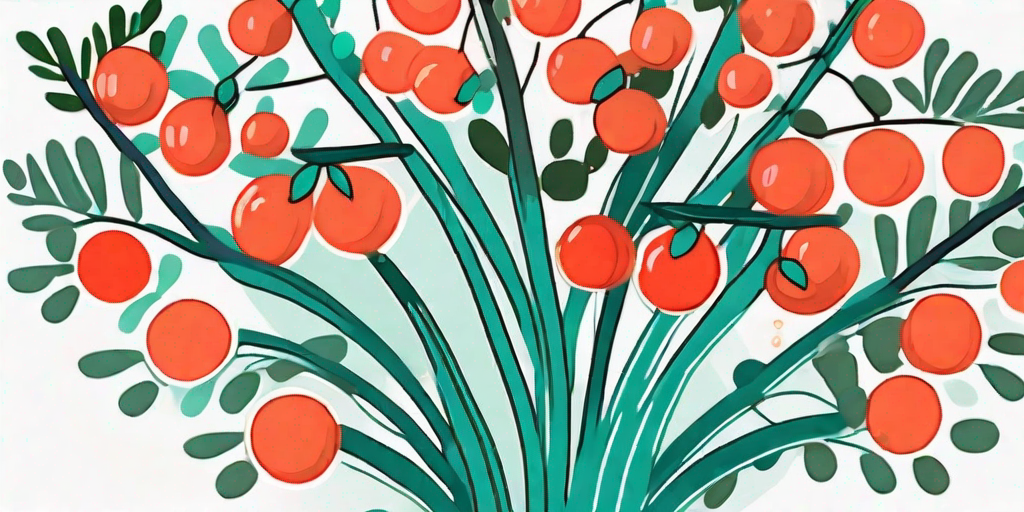
Welcome to the world of gardening, where patience is a virtue and the rewards are bountiful. Today, we're going to delve into the vibrant world of the Coral Bead Plant, also known as the Nertera Granadensis. This cheeky little plant is a showstopper in any garden with its bright, coral-colored berries. So, let's roll up our sleeves and get our hands dirty, shall we?
Understanding the Coral Bead Plant
Before we dive into the nitty-gritty of how to grow and care for this beauty, let's take a moment to appreciate its uniqueness. The Coral Bead Plant is a creeping perennial native to cool temperate and subtropical regions. It's like the chameleon of the plant world, adapting to different climates with ease. The plant's claim to fame, however, is its vibrant coral-colored berries that give it its name.
The Coral Bead Plant is a low-maintenance, high-reward kind of plant. It's perfect for those of us who love the idea of gardening but are a bit forgetful when it comes to watering. The plant is also a great conversation starter, with its bright berries often mistaken for tiny tomatoes or even fairy lights!
The Plant's Anatomy
The Coral Bead Plant is a small, creeping plant that grows up to 15 cm tall. Its leaves are small, round, and glossy, providing a beautiful contrast to its bright berries. The berries themselves are the star of the show, appearing in late summer and lasting well into winter.
One interesting fact about this plant is that it's dioecious, meaning it has separate male and female plants. The female plants produce the berries, but only if a male plant is nearby to pollinate them. So, if you're planning on growing this plant for its berries, make sure to get both male and female plants. It's like a botanical version of a romantic comedy!
How to Grow and Care for the Coral Bead Plant
Now that we've gotten to know our plant a bit better, let's talk about how to grow and care for it. Despite its exotic appearance, the Coral Bead Plant is surprisingly easy to grow, making it perfect for beginners and seasoned gardeners alike.
The plant prefers cool, humid conditions and indirect sunlight. It's not a fan of direct sunlight, which can scorch its leaves and cause its berries to shrivel. So, if you're planning on growing this plant indoors, place it near a north-facing window for the best results.
Planting the Coral Bead Plant
When it comes to planting the Coral Bead Plant, there are a few things to keep in mind. First, the plant prefers well-draining soil. A mix of peat moss and perlite works well. Second, the plant likes to be kept moist but not waterlogged. Overwatering can lead to root rot, which is as nasty as it sounds.
Plant the Coral Bead Plant in a shallow pot, as it has a shallow root system. Make sure the pot has drainage holes to prevent waterlogging. Once planted, water the plant thoroughly and place it in a cool, humid spot away from direct sunlight.
Caring for the Coral Bead Plant
Caring for the Coral Bead Plant is a breeze. The plant needs to be watered regularly, but make sure the soil is never waterlogged. A good rule of thumb is to let the top inch of soil dry out between waterings.
The plant also benefits from regular misting to maintain humidity. If the air in your home is dry, consider placing the plant on a tray of pebbles filled with water. The evaporating water will increase the humidity around the plant.
FAQs
Why are my Coral Bead Plant's berries shriveling?
Shriveling berries are often a sign of too much sunlight or not enough water. Move your plant to a shadier spot and make sure it's getting enough water.
Why are my Coral Bead Plant's leaves turning yellow?
Yellow leaves can be a sign of overwatering. Remember, the Coral Bead Plant likes to be kept moist but not waterlogged. Let the top inch of soil dry out between waterings.
Can I grow the Coral Bead Plant outdoors?
Yes, the Coral Bead Plant can be grown outdoors in zones 10 and 11. It prefers a shady spot with well-draining soil.
Conclusion
And there you have it, a comprehensive guide to unleashing the beauty of the Coral Bead Plant. With its vibrant berries and easy care, this plant is sure to become a favorite in your garden or home. So, what are you waiting for? Get out there and start gardening!















